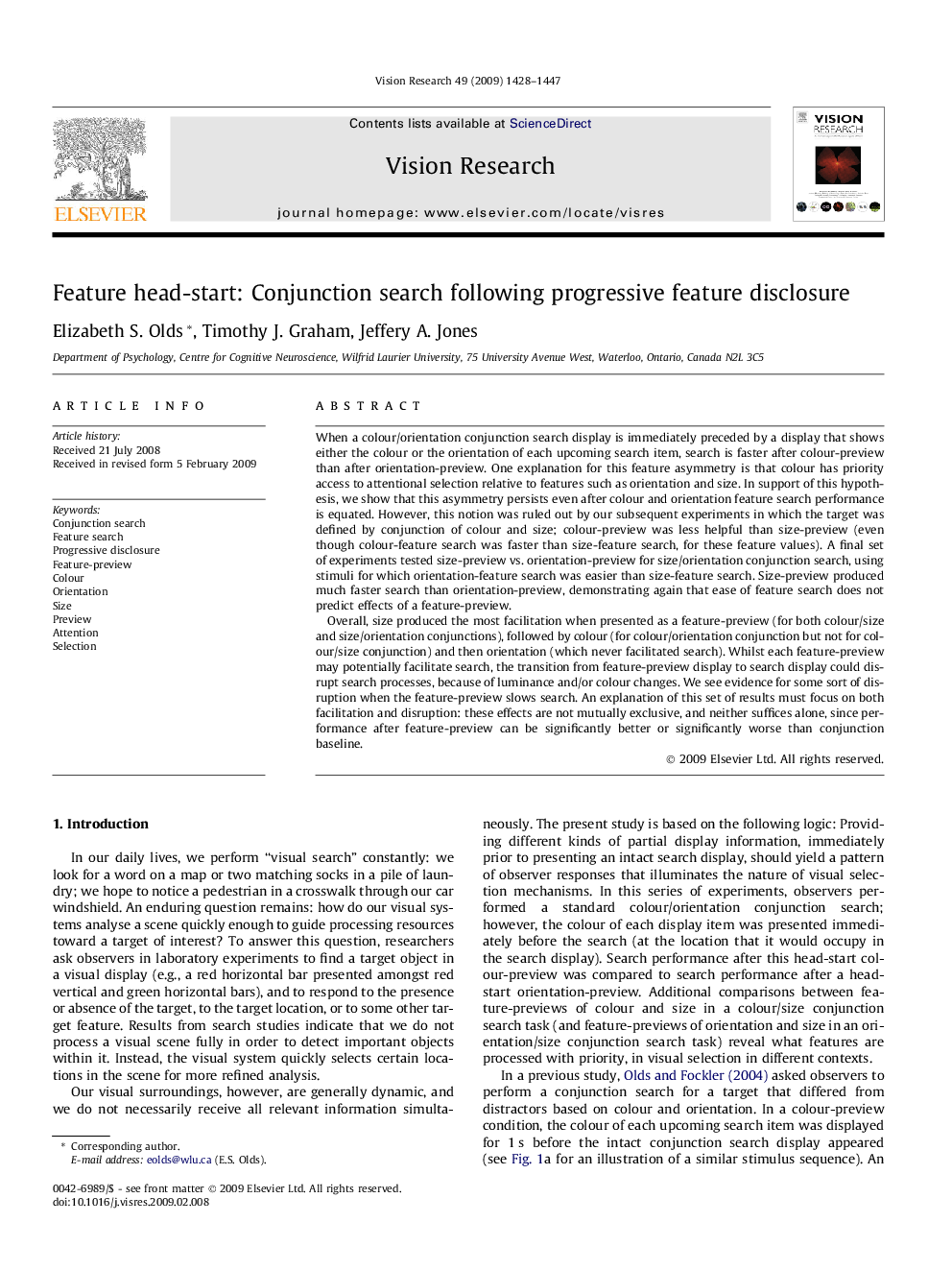| Article ID | Journal | Published Year | Pages | File Type |
|---|---|---|---|---|
| 4035352 | Vision Research | 2009 | 20 Pages |
When a colour/orientation conjunction search display is immediately preceded by a display that shows either the colour or the orientation of each upcoming search item, search is faster after colour-preview than after orientation-preview. One explanation for this feature asymmetry is that colour has priority access to attentional selection relative to features such as orientation and size. In support of this hypothesis, we show that this asymmetry persists even after colour and orientation feature search performance is equated. However, this notion was ruled out by our subsequent experiments in which the target was defined by conjunction of colour and size; colour-preview was less helpful than size-preview (even though colour-feature search was faster than size-feature search, for these feature values). A final set of experiments tested size-preview vs. orientation-preview for size/orientation conjunction search, using stimuli for which orientation-feature search was easier than size-feature search. Size-preview produced much faster search than orientation-preview, demonstrating again that ease of feature search does not predict effects of a feature-preview.Overall, size produced the most facilitation when presented as a feature-preview (for both colour/size and size/orientation conjunctions), followed by colour (for colour/orientation conjunction but not for colour/size conjunction) and then orientation (which never facilitated search). Whilst each feature-preview may potentially facilitate search, the transition from feature-preview display to search display could disrupt search processes, because of luminance and/or colour changes. We see evidence for some sort of disruption when the feature-preview slows search. An explanation of this set of results must focus on both facilitation and disruption: these effects are not mutually exclusive, and neither suffices alone, since performance after feature-preview can be significantly better or significantly worse than conjunction baseline.
